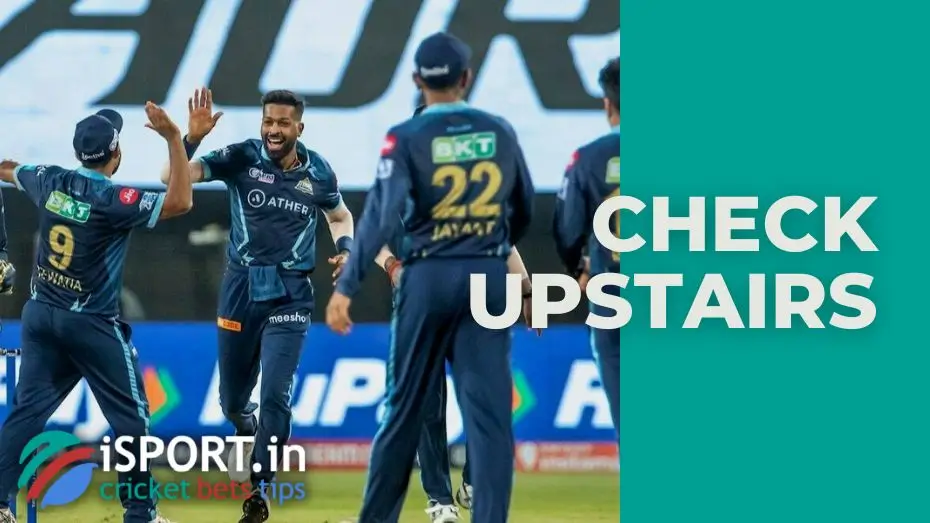Check upstairs

Modern cricket consists of many incomprehensible phrases and expressions. In this brief overview, we will try to explain the meaning of the term check upstairs. We believe this is necessary action in every professional cricket tournament.
Check upstairs – what is mean?
Controversial situations arise quite often in cricket at various tournaments that cannot be resolved without the intervention of the referees. Today, professional matches are served by a team of 4 judges:
- The first one is located near the bowler. He monitors the correctness of the filing, as there are restrictions and rules for this;
- The second one is watching the batsman. He also makes sure that the rally is played according to the rules and that the batsman meets all the requirements;
- Another referee monitors all replays in matches. In fact, this is one of the most important judges of the game. This is what the term check upstairs refers to;
- A fourth referee is added in test matches. His main task is to follow the balls and deliver drinks to the referees at the stadium.
Check upstairs means that a controversial moment has arisen during the game, and the help of the 3rd referee is needed, who monitors the replays. It is he who helps to make a control decision.
For such situations, the DRS system – Decision Review System – is used at the championships. This system was officially tested in 2008. Although the third referee appeared at tournaments back in 1992, due to the limited technology at that time, his functions were very different from those of today.
DRS was first tested in the India – Sri-Lanka match in 2008. After a good start, the International Cricket Council approved the use of DRS in test matches. The first game using this system took place in November 2009 between New Zealand and Pakistan. At first, video replays were mandatory in tournaments, but later, the ICC proposed that both teams decide for themselves whether replays were needed in matches.
Every year the system has been changed and implemented in different countries. In 2014, Australia began using DRS for One Day International matches. In 2017, ICC agreed to use the ICC World T20 for all future competitions. This first tournament was the ICC Women’s World T20 in 2018. Today the DRS system consists of the following components:
- TV replays, including slow motion playback;
- Hawk-Eye, Eagle Eye or Virtual Eye. Such a system tracks the ball, which displays the trajectory of the serve. It can even predict whether the ball will hit the wicket;
- Snickometer (Real Time Snicko) or Ultra-edge. Detects extraneous sounds;
- Hot Spot. Infrared imaging system. In case of controversial moments, it shows what the ball was in contact with. For example: with a bat or a glove.
The third referee watches the episode from different cameras and only then reports to the field whether the request is confirmed. According to the analysis carried out from 2009 to 2017, DRS is 90% accurate.
